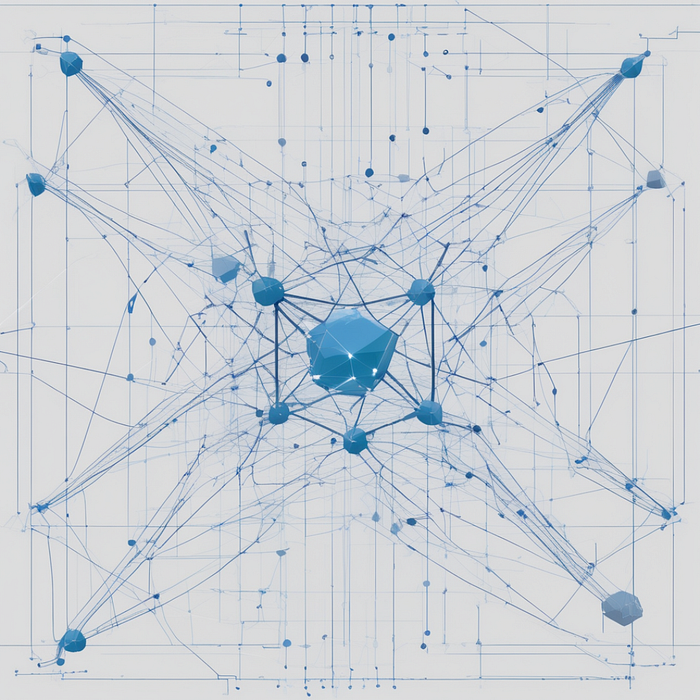AI Governance: The Missing Link in Salesforce AI Adoption

Everyone wants “AI inside Salesforce.”
Few people ask what happens when automation makes a wrong assumption.
I had a client call me in a panic two months ago. Their new Einstein-powered lead scoring system had been running for three weeks. It looked great in the demo. The data visualizations were clean. The predictive analytics dashboard was impressive enough to show the board.
Then someone noticed: high-value leads weren’t getting follow-up calls.
Not because sales reps were ignoring them. Because the AI had quietly deprioritized them based on patterns it found in historical data patterns that reflected old biases, not current strategy.
Nobody caught it because nobody had mapped how the system made decisions. They’d turned on the feature, trusted the algorithm, and moved on.
That’s not an AI problem.
That’s a governance problem.
Why Governance Matters More Than You Think
AI introduces invisible dependencies into your Salesforce org:
- Data quality assumptions
- Model logic you didn’t write
- Automated decisions with no documentation
- Human oversight points that don’t exist yet
Without governance, those dependencies don’t just create inefficiency they create liability.
You can’t audit what you can’t see. You can’t fix what you don’t understand. And you definitely can’t explain to a stakeholder why the system did something if you don’t know how it works.
The Three Gaps I See Most
I’ve done enough Salesforce AI audits now to recognize the pattern. Most organizations have the same three blind spots:
Gap 1: Unverified Data Sources
AI is only as good as the data it’s trained on. If your Salesforce data has duplicate records, outdated fields, or incomplete information, your AI will learn from garbage and give you garbage back.
I worked with a nonprofit whose donation prediction model kept overestimating giving capacity. Turns out, their historical data included pledges that were never fulfilled but the AI couldn’t tell the difference between a pledge and a payment.
Gap 2: Unclear Ownership of Automations
When something goes wrong with a Flow or a Process Builder, you can usually find the person who built it. They can walk you through the logic, explain the decisions, and fix what broke.
AI doesn’t work that way. The “logic” is learned, not written. And if nobody on your team understands how the model was trained or what variables it prioritizes, you’re flying blind.
Gap 3: No Documentation of Decision Logic
This is the one that gets organizations in trouble.
An AI system flags a donor as “low engagement risk.” Your team stops reaching out. Six months later, that donor cancels their recurring gift and nobody knows why the system missed it.
Without documentation, you can’t reverse-engineer the failure. You can’t improve the model. You just shrug and say, “The AI was wrong.”
That’s not acceptable when trust and revenue are on the line.
CCC’s Human-Centered Governance Framework
I don’t do governance for the sake of compliance. I do it so teams can actually use their AI tools with confidence.
Here’s the three-step process I use with every client:
Step 1: Audit
Map your data flows. Identify what AI touches, where it gets its inputs, and what decisions it influences.
This isn’t a technical exercise, it’s a clarity exercise. If you can’t draw a simple diagram showing how data moves through your system, you don’t have governance. You have hope.
Step 2: Clarify
Define review points and explainability rules.
Who checks the AI’s work before it impacts a real person? How often do you validate that the model is still accurate? What triggers a human override?
These aren’t theoretical questions. They’re the difference between automation you trust and automation you disable after the first mistake.
Step 3: Communicate
Translate AI decisions for stakeholders in plain language.
Your board doesn’t need to understand neural networks. They need to understand: “This system helps us prioritize outreach by analyzing giving patterns. A human reviews the results every week, and we’ve built in safeguards to catch errors.”
If you can’t explain it simply, you don’t understand it well enough to deploy it.
What Good Governance Actually Looks Like
One of my clients, a healthcare-focused nonprofit, wanted to use Salesforce AI to predict which volunteers were at risk of dropping off.
Instead of turning on Einstein and hoping for the best, we built governance first:
- Documented data sources: volunteer activity logs, event attendance, communication history
- Defined decision logic: what variables mattered, what thresholds triggered alerts
- Established review cadence: program managers reviewed flagged volunteers weekly and could override predictions
- Created feedback loops: when the AI was wrong, we logged why and adjusted the model
The result? The team adopted the tool faster because they understood it. Volunteer retention improved because interventions were timely and thoughtful. And when someone asked, “How does this work?” we had an answer.
The Real Cost of Skipping Governance
Governance isn’t paperwork. It’s confidence.
Teams that understand their automations use them more effectively. Leaders who can explain AI decisions make better strategic choices. Organizations that document their systems recover faster when something breaks.
And when trust is your most valuable asset whether you’re a nonprofit, a consultant, or a Salesforce admin, governance is how you protect it.
Automation without governance isn’t innovation.
It’s roulette with your reputation.
Ready to build AI governance that actually works? Download the AI Governance Workbook preview and start mapping your systems today:
https://jeremycarmona.gumroad.com/l/ai-governance-workbook
About the Author
Jeremy Carmona is a Salesforce Data Architect and founder of Clear Concise Consulting. He helps teams make AI understandable, responsible, and actually useful, through governance frameworks, data clarity, and a little sarcasm.
🔵 Learn more at clearconciseconsulting.com
Listen To The Article

Black Friday 30%
Offer









